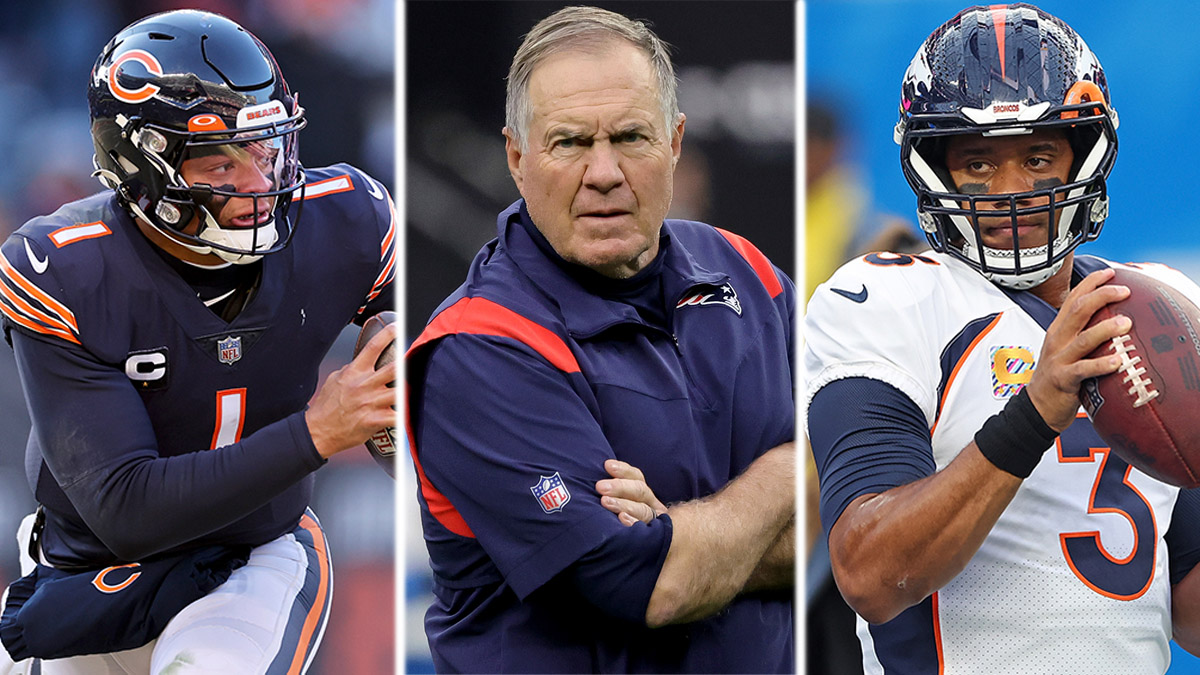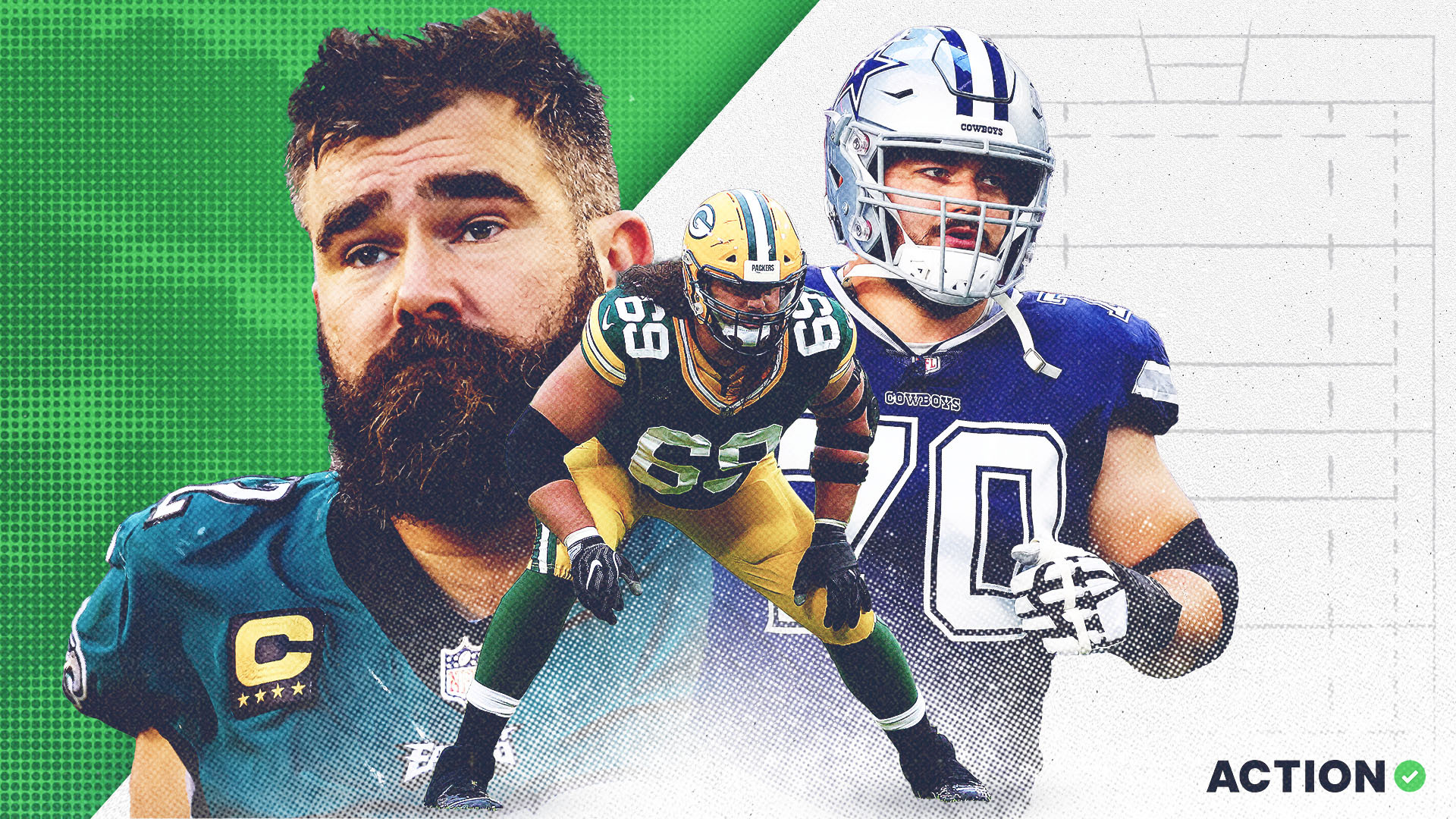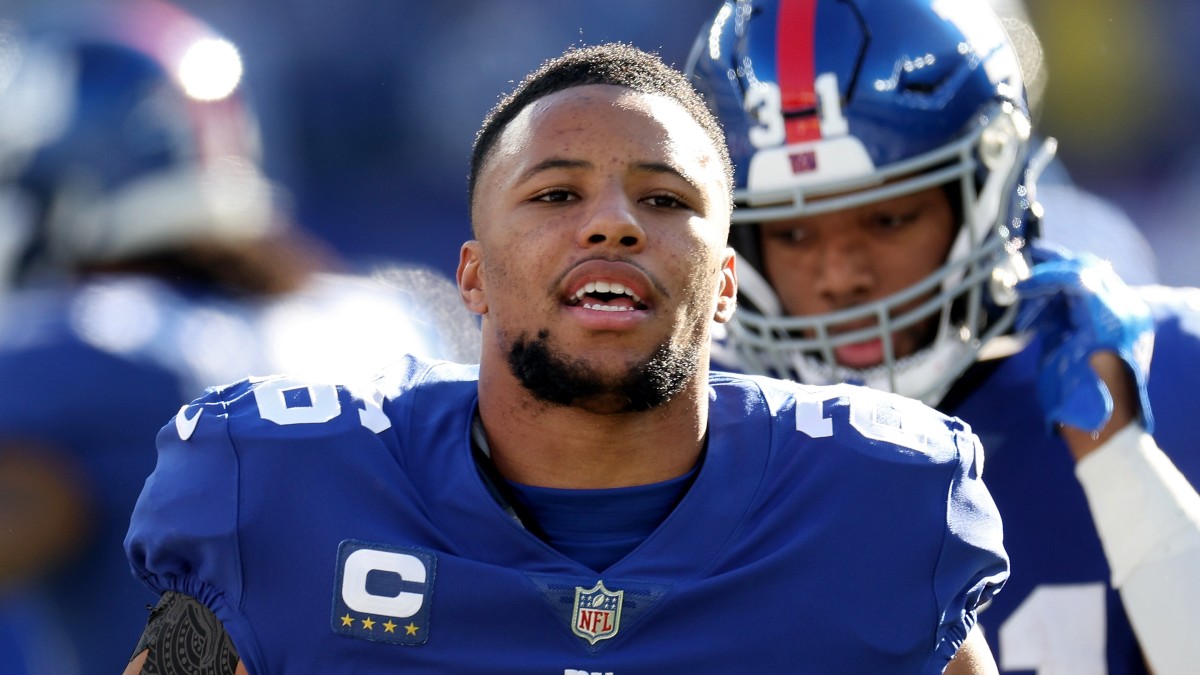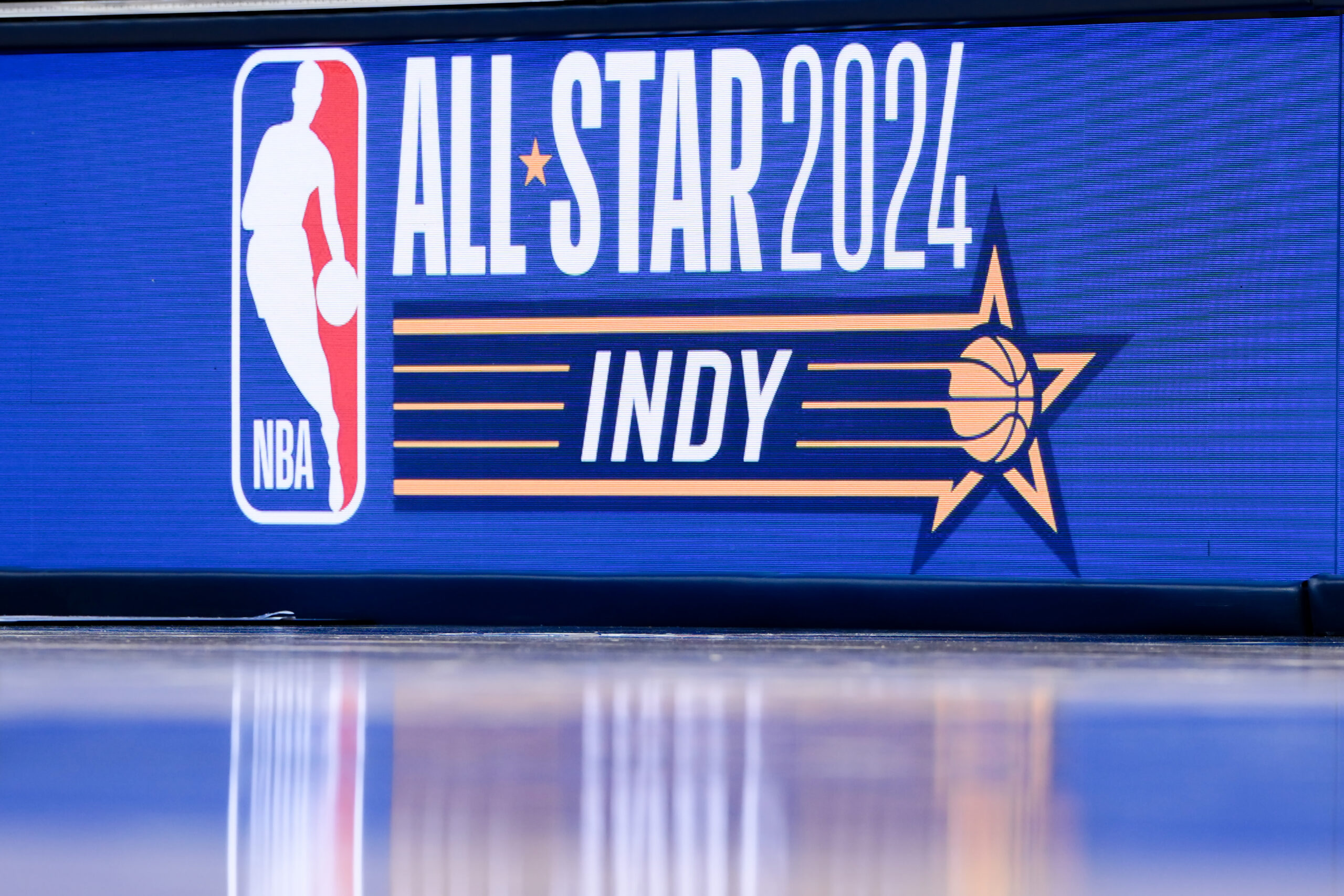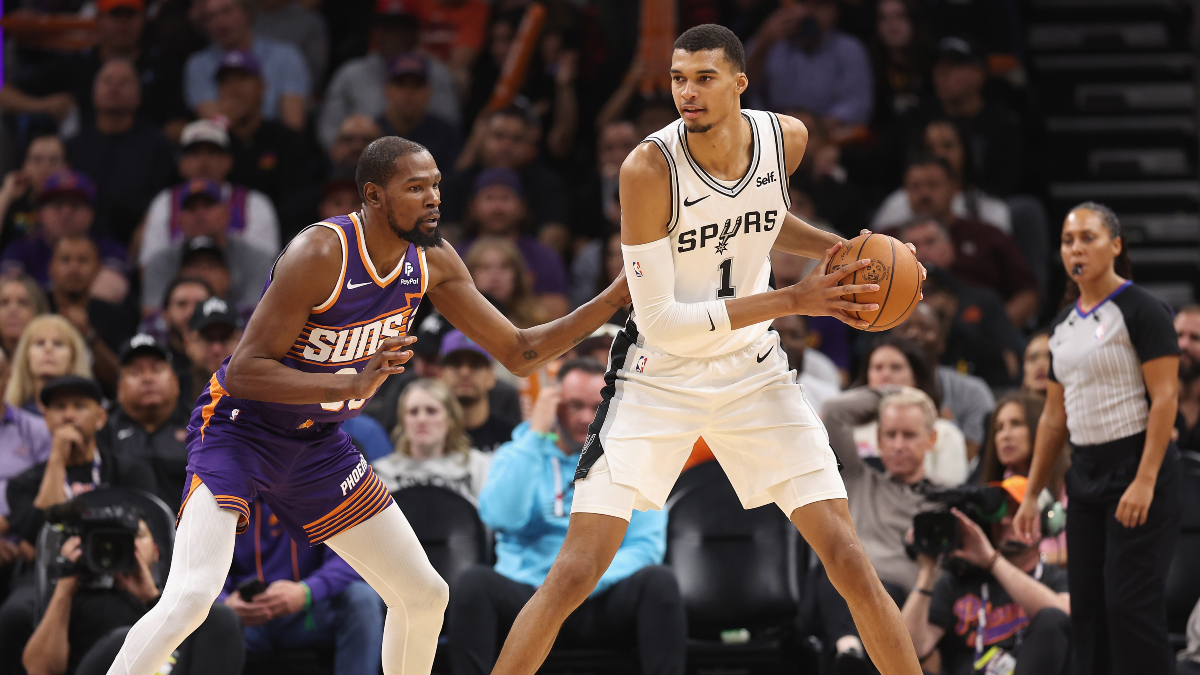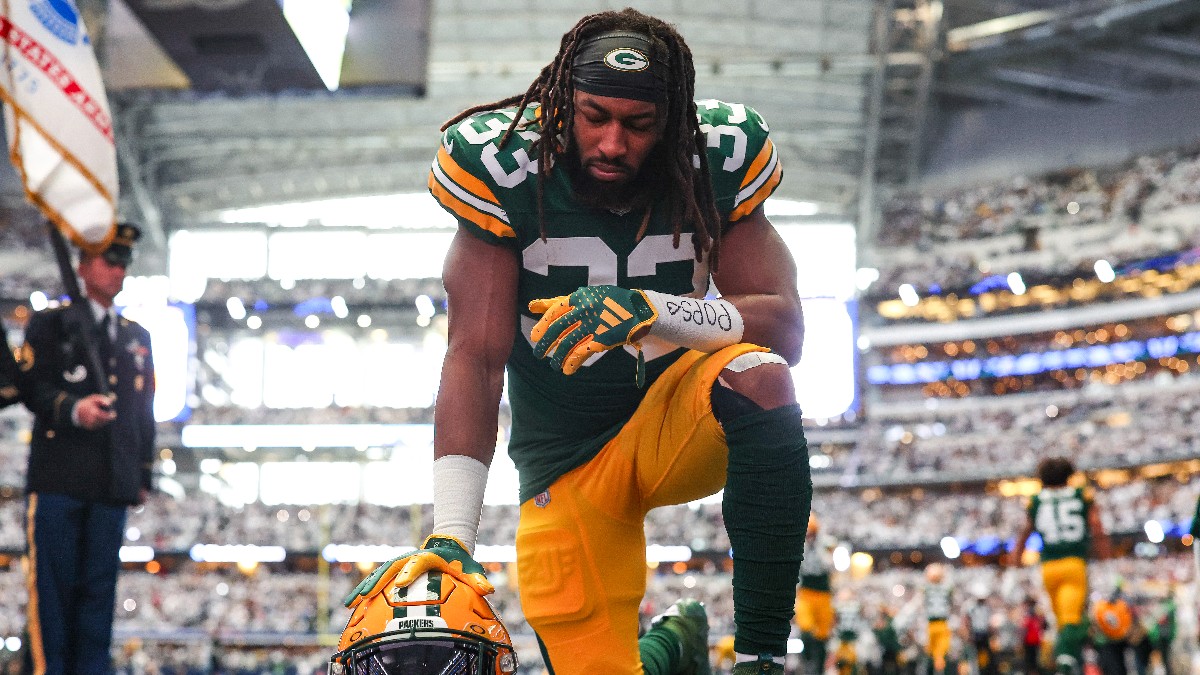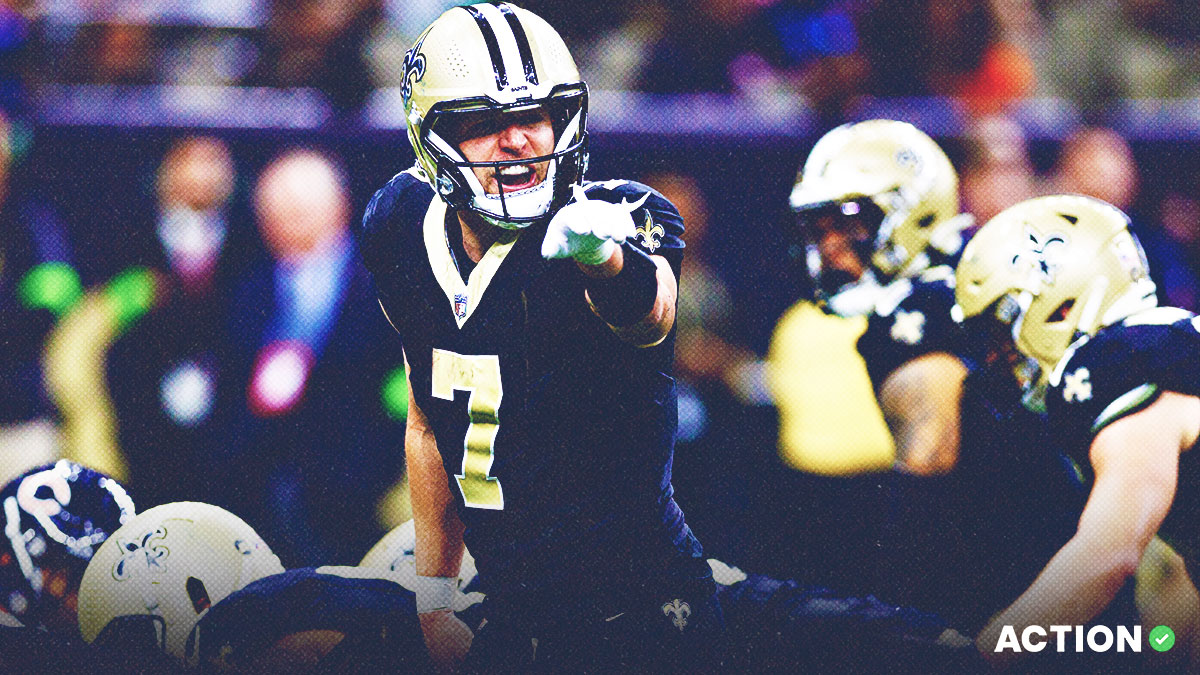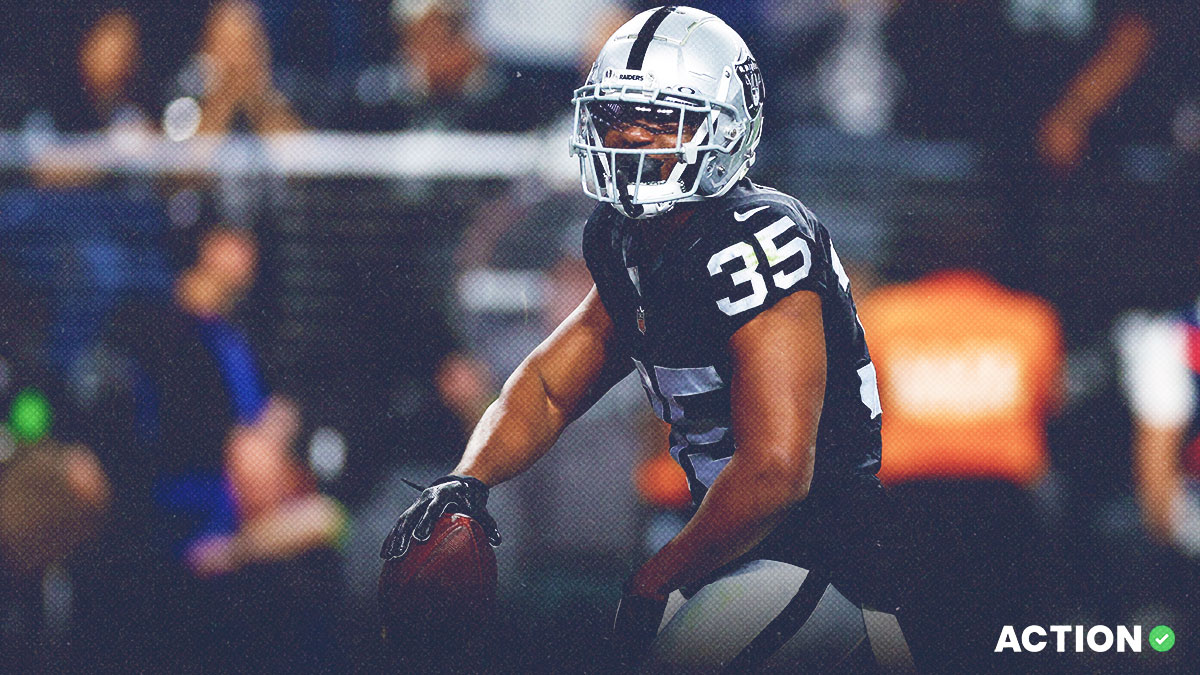Once we have the first 30 or so running backs off the board, we're typically drafting a team’s backup running back.
Most of these running backs' end-of-season value will come down to factors outside of their control, one of the most important ones being the health of their team’s starting RB. The backups who are given the opportunity to get starts for an injured/suspended/benched teammate will allow them to provide more value but is also largely outside of their control.
That’s why at this stage in the draft I like to think of all of these different pieces when it comes to knowing which backups to target. I created this chart to be a better visual representation of how we should think about this and identify which backups offer the most upside, as well as the most paths to hit it.
Here are the factors I reference in my downloadable chart below:
- Role: The type of role the RB is in
- Start %: This metric is just a way to measure an RBs job security. The logic behind it is the chances they would start all 17 games of the season if all RBs on the team were healthy. The lower the number for a starter, the more likely it is they will get leapfrogged (a massive blow to an RB’s value) and the higher the number for a backup, the more likely they are to become the lead back without needing an injury.
- Health: The current status of the player. A backup playing behind an RB dealing with a current injury/holdout/suspension gives them even more value
- ADP: Current ADP, as of Thursday, Aug. 17.
- Starter/Backup In: Roughly where I will have the player ranked when everyone is healthy
- Starter/Backup Out: Roughly where I will have the player ranked when either the #1 or #2 (whichever one they aren’t) is out. Again, this is a guideline and not exactly where I will have them ranked if the situation occurs in season. There are hundreds of other factors that will be in play when that occurs that will likely lead to a different rank. We are just trying to get an idea as to what their injury upside is.
- Grade: The grade I assign a backup based on their ADP, rank with the starter in/out, while also factoring in the health, potential suspension, trade, injury history of the starter, or other factors. Again, the whole idea is to assess which backs offer the most upside and the paths/chances of them hitting it.
Starter: As long as he is healthy, James Conner will be the workhorse back for the Cardinals. He will be a low-end RB2 most weeks, but the market has been drafting him more as an RB3/Flex, likely due to the fact that he has missed multiple games in each of his six seasons in the NFL. The health of his backups will have little value on his expected touches since he’s likely already going to be getting as many touches as he can handle.
Backup: Keaontay Ingram will likely see a handful of touches a game, even when Conner is active. However, it won’t be enough to provide any value, even in the deepest leagues. If Conner was to miss time, Ingram could see enough volume to offer RB3/flex value.
Corey Clement could prevent Ingram from offering RB3/flex value in that scenario, but he isn’t someone we should be targeting. Emari Demercado is someone who could make some noise if he continues to impress in preseason and would be a dark horse bet to make the team and potentially operate as the team’s lead back if Conner were to ever miss time.
Ingram is a Conner injury away from offering potential RB3/flex value. He isn’t a slam dunk, but he seems like one of the cheaper handcuffs in the league. Very few RBs this late have as clear of a path to offering value as Ingram does. He’s a capable pass catcher, which should also help considering the Cardinals are going to be trailing more times than not this season.
Based on his ADP of RB83, Ingram qualifies as a very cheap handcuff, with RB3/flex upside.
Verdict: B- for Ingram
Starter: The Falcons spent a top-10 pick on Bijan Robinson because he is a generational talent and can be a true workhorse back on Day 1. He'll offer top-five value as long as he is healthy. Tyler Allgeier’s presence may be the main factor that prevents him from finishing as the RB1 overall, but Robinson's upside would truly be unlocked if Allgeier misses time.
Backup: Allgeier will likely operate as Robinson's backup, but the Falcons' extreme run-heavy offense should produce enough volume for Allgeier to sneak in as an RB3/flex value in certain matchups. He also carries mid-range RB2 upside if Robinson ever misses time.
Allgeier carries one of the highest floor/ceiling combos in the RB40-50 range, making him a great backup to target.
Verdict: A for Allgeier
Starter: J.K. Dobbins finally made his return to practice on Monday, Aug. 14, and seems set to start Week 1. The Ravens appear to be moving away from their extreme run-heavy offense that utilized a fullback in a power-run scheme and more toward an offense that will use more 11 personnel in a more pass-heavy approach under Todd Monken. We could see Dobbins get less work as a runner and more as a pass catcher than usual.
Ultimately, I think he ends up maintaining low-end RB2 value in the new scheme.
Backup: Gus Edwards will likely become the lead back if Dobbins ever misses time. But Edwards’ below-average pass-catching skills could limit his upside in the new scheme. Plus, he seems to have decent competition from Melvin Gordon, Keaton Mitchell and Justice Hill. One or two of those backs could make this more of a running back by committee (RBBC) behind Dobbins than we have seen in years past.
Edwards should be able to return value once he falls outside of the top 60, but he doesn’t offer enough upside to get too excited over.
Verdict: C+ for Edwards
Starter: James Cook is set to take on more of a workhorse role with Devin Singletary gone. Damien Harris was brought in to handle some of the early-down, short-yardage situations, but all signs point to Cook having a 15+ touch role to begin the season. If Harris was ever to miss time, Cook could see even more touches and offer mid-range RB2 value.
Backup: Harris should handle enough early down and goal-line work to offer RB3/flex value at times, even when Cook is active. There's a chance Harris could provide low-end RB2 value in the event Cook misses time, but we'll likely see Latavius Murray/Darrynton Evans absorb most of the leftover touches, which could cap Harris’ upside. He’s being drafted right about where he should go.
Verdict: C+ for Harris
Starter: Miles Sanders is set to become the Panthers' workhorse back this season. He’s currently dealing with a groin injury, but we're still far enough away from Week 1 that he has enough time to be 100% by the time the season starts. Sanders should be a low-end RB2 option as long as he’s healthy.
Backup: Chuba Hubbard should see a handful of touches a game, even when Sanders is healthy, but it likely won’t be enough to offer much value. He could push low-end RB2 value if Sanders were ever to miss time, with Raheem Blackshear likely commanding a handful of touches. Hubbard offers a better floor/ceiling combo than Gus Edwards, who is being drafted around the same time.
Verdict: B- for Hubbard
Starter: The Bears backfield will open up the season as one of the trickiest ones to project. Khalil Herbert, D'Onta Foreman or Roschon Johnson could emerge as the team’s lead back, but the most likely outcome is that we see more of a “hot hand” approach where we see all three backs offer value at times this season.
Herbert is still my “bet on talent” from this backfield. I already thought highly of Herbert before his 56-yard TD against the Titans in Week 1 of the preseason, but his ADP will surely rise over the coming weeks as more people come to this realization. Yes, he had a wide-open running lane for the first 40+ yards of that catch and run, but he has a history of finding the best angle of attack when he has the ball in his hands and also managed to break 2-3 would be tackles over the final 5-10 yards of that run to actually score the TD.
I will not stand for any Herbert slander in the comment section of this tweet.
The days of getting Herbert in the RB35 range are probably over pic.twitter.com/w7O3VTUUKf
— Sean Koerner (@The_Oddsmaker) August 12, 2023
Herbert, admittedly, has a wide range of outcomes, because as you can see in the "Start %" column of my upside spreadsheet that measures potential job security, it’s one of the lowest of all Week 1 starters. Still, he has a path to RB2 upside without needing a single injury to a teammate.
Herbert is being drafted in a range (RB37) where most of these backs need an injury to offer RB2+ value, but he can simply get there with strong play. His worst-case scenario, which is being leapfrogged as the starter, would still make him your typical injury-upside backup that you are taking in the RB35-45 range anyway.
Backup: Foreman is an established veteran who could be a nice fallback option for the Bears if both Herbert and Johnson struggle this season. However, his upside is fairly limited in fantasy, and I think the backup to target would be fourth-round rookie Johnson.
Johnson has the talent to be a true workhorse back at the NFL level and the fact that he had to back up Bijan Robinson at Texas just means he has less tread on his tires than most rookie backs. There's a real chance he plays well enough as a rookie that he can leapfrog both a healthy Khalil Herbert and D’Onta Foreman. Therefore, he's a back that you can get outside of the top 50 who has a path to RB3/Flex value without needing an injury to anyone, which gives Johnson a unique path to hitting his ceiling that other backs just don’t have in this range.
So, while Johnson's Starter In/Out profile may not look as enticing as Chuba Hubbard’s, note that his Start % (potential to become the starter without needing an injury) is much higher, which is a critical part of my grade.
Verdict: B- for Johnson
Starter: Joe Mixon restructured his contract to ensure he will be the Bengals' lead back for at least one more season. With Samaje Perine no longer with the team, Mixon could handle even more work than usual, specifically in the passing game.
Backup: Chris Evans, Chase Brown and Treyveon Williams are all competing for the backup role, and there is still a ton of uncertainty in how this will all shake out as we enter Week 2 of the preseason.
Williams appeared to be the slight favorite to be the No. 2 back before an ankle injury knocked him out for the first few weeks of camp. As of now, it looks like Evans has the best chance to at least begin the season as the backup. He’s more of a pass-catching back who could handle the third-down work left behind by Samaje Perine.
Over the long haul, I think fifth-round-rookie Brown has the most upside of the three backs as I view him as the more talented back and someone who would be capable of a workhorse role if Mixon were ever to miss time. Brown is currently going RB64, which is a bit early for a back who is still in a 2-3 way battle to see who will be the backup.
Verdict: C- for Evans
Starter: With Kareem Hunt no longer with the Browns, Nick Chubb could see an increase in touches as Cleveland doesn’t have a backup talented enough to take away snaps from him. Chubb is arguably the best pure runner in the game, and we could see him become a weekly top-five option if he inherits some of the third-down work left behind by Hunt.
Backup: Jerome Ford looks like the favorite to become Chubb’s backup, but a hamstring injury that is going to knock out Ford for weeks throws some cold water on his 2023 outlook. Once he's healthy, I do think he’s talented enough to hold off Demetric Felton and John Kelly to be Chubb’s direct backup.
There's a chance the Browns continue to limit Chubb’s usage and use Ford in a Kareem Hunt-like role, so there is a non-zero chance he could carve out an RB3/flex role (even when Chubb is healthy). He would also offer potential RB2/3 value if Chubb misses time, playing behind one of the better O-lines in the league.
A lot of things still need to break Ford’s way, but he does carry enough upside to take in the RB55-60 range. However, given his current hamstring injury, I wouldn’t reach for him earlier.
Verdict: B- for Ford
Starter: Tony Pollard is set to become the Cowboys lead back in the post-Ezekiel Elliott era. There was a slight chance the Cowboys would have brought back Zeke to back up Pollard, but Elliott is now with the Patriots. Pollard is set to become a potential top-five option every week.
Backup: Malik Davis entered the preseason as the slight favorite to win the backup job, but after a shaky Week 1 performance and Rico Dowdle and Deuce Vaughn playing well, the competition for the No. 2 role is wide open.
Vaughn probably has the best chance to carve out a "2022 Tony Pollard" type of role, where he has the talent to post solid numbers in a limited role. But if Pollard misses time this season, it would likely be Davis who handles the most touches. Ronald Jones could also factor in once he returns from his two-game suspension.
While this backfield doesn’t have a clear backup to target (yet), it’s still a situation we should be very invested in and is a situation to monitor closely as training camp/preseason plays out.
Verdict: C- for Davis
Starter: Javonte Williams’ recovery from torn ACL/MCL/PCLs appears to be ahead of schedule. Not only should he be ready by Week 1, but he might even see action in the preseason. There’s a chance he’s limited early in the season, similar to J.K. Dobbins last year, so it’s a situation that is still fairly volatile. Either way, Williams will be the Broncos' lead back whenever he's healthy.
Backup: Samaje Perine lost some of his early-season appeal with Javonte Williams looking likely to suit up Week 1. There is a chance that Williams is limited for the first few weeks, but it’ll be tough to trust Perine in lineups if that’s the case.
With the positive news on Williams, I do expect Perine’s ADP to drop a bit. He will have some appeal if he falls outside of the top 40, considering he is backing up an RB who is likely entering the season at less than 100%. Plus, he’s likely going to have a big enough role to offer RB3/flex at times, even when Williams is active.
Verdict: B for Perine
Starter: The Lions think highly of Jahmyr Gibbs, which is why they spent a first-round pick on him, so he'll open the season as the team’s starting RB. He'll likely dominate passing-down work and rush attempts between the 20-yard lines, similar to the D’Andre Swift role from years past.
Backup: David Montgomery will be the “backup” who will still handle a big enough role to offer RB3/flex value most weeks. He’s expected to pick up the Jamaal Williams role of handling early-down and goal-line work. It’s a role that produced 17 rushing touchdowns a year ago. Now, I’m not saying Montgomery will score 15+ TDs this season, but there is a real chance he can score 10+, and he’s a better pass-catching back than Williams, which gives him upside for more.
Montgomery would have top-10 upside if Gibbs misses time, which makes Montgomery the type of running back I created this chart for. He earns the rare A+ grade that only Kareem Hunt and Tony Pollard received last season.
Verdict: A+ for Montgomery
Starter: Aaron Jones will likely remain the 1A back with A.J. Dillion being the 1B. Jones’ pass-catching role will likely be even more valuable with the Packers likely facing more trailing game scripts in the post-Aaron Rodgers Era. Jones is being overlooked as a mid-range RB2 because he would likely become a solid RB1 option if his backup was to miss time.
Backup: Dillon is the ideal type of backup RB to target because he should return value as at ADP as an every-week RB3/flex option, but he has high-end RB2 upside if Jones misses time. Dillon isn’t quite an A+ option because he will likely be hurt by the Packers offense not being quite as potent in the post-Aaron Rodgers Era, but he’s one of the better targets in the RB30-35 range.
Verdict: A- for Dillon
Starter: Dameon Pierce’s main competition for touches last season was Rex Burkhead, so it’s safe to say Devin Singletary will be an upgrade at the backup position. Pierce is talented enough to not be too concerned about Singletary potentially leapfrogging him, but it's still a possibility.
Singletary could be a Jamaal Williams type where he ends up getting a bit more work than many would expect because he's the type of player teammates rally around. Pierce should benefit from the Texans potentially turning the corner this year and being closer to a .500 team than recent seasons.
Backup: Singletary will command a handful of touches, even when Pierce is healthy, but the Texans offense is unlikely to support two fantasy-relevant backs at the same time. Therefore, Singletary probably needs Pierce to be out of the lineup in order to start him with any sort of confidence in most formats. His ADP (RB46) seems a bit late for his floor/ceiling combo, which is what makes him earn a B+ grade from me.
Verdict: B+ for Singletary
Starter: Jonathan Taylor’s holdout is potentially coming to an end, but the Colts recently excused him from practice from apparently a non-holdout-related matter. His ADP (RB8) will likely fall a couple spots if/when this situation is resolved. Until then, there's still a bit of risk involved in taking Taylor right now since he isn’t a lock to suit up for Week 1.
Backup: Due to the uncertainty with Taylor’s holdout, the Colts RBs have an increased chance of providing some spot starts, but it’s hard to say which specific back would be the one to roster.
Zack Moss could become the lead back, but he’s currently recovering from a broken arm and his Week 1 status is still up in the air. Fifth-round-rookie Evan Hull got the start in the team’s preseason opener, but he was outplayed by Deon Jackson. Hull is more of a pass-catching back, which isn’t going to be a valuable role with a scrambling QB like Anthony Richardson under center.
I’m not targeting any Colts backups until we get more clarity on which back could potentially offer RB3/flex value if there are spot-start opportunities. The only reason I’m giving Hull a C- instead of an F is because of the increased chances of spot starts given the team’s starting RB could have his holdout spill over into the regular season.
Verdict: C- for Hull
Starter: Travis Etienne’s ADP (RB12) appears to be closer to his ceiling (if/when Tank Bigsby misses time), which makes him a bit of a reach as a low-end RB1. He'll likely concede a handful of touches to Bigsby, and I’m concerned some of them can be the extremely valuable goal-line variety. Etienne only scored three TDs on 13 rush attempts inside the 5-yard line. That’s 2.3 touchdowns below expected, which can either mean A) he’s due for positive TD regression this season, or B) he could potentially lose goal-line touches.
With Etienne, I’m guessing it will be a little bit of both. He’s a very talented runner, so we should see him convert more goal-line opportunities going forward, but since he’s much more of a home run-hitter type of back, Bigsby may be the better goal-line option on the team.
Backup: Bigsby is a third-round back who has the talent to command touches, even from a talented back like Etienne. He may also be able to become the team’s goal-line option, which gives him a path to RB3/flex upside, even when Etienne is healthy. If Etienne misses time, Bigsby could offer low-end RB2 value, but I’m guessing JaMycal Hasty would inherit most of the receiving work left behind by Etienne, which would cap Bigsby’s upside.
Verdict: B for Bigsby
Starter: Isiah Pacheco emerged as the Chiefs starting RB as a rookie last season. He’s set to be the team’s Week 1 starter for 2023 but could be facing some competition from undrafted free agent Deneric Prince, who's currently generating buzz in camp.
Pacheco’s value would crater if Prince is able to start commanding a handful of touches a game because Pacheco is already conceding most of the receiving work to Jerick McKinnon. It’s also the same reason why Pacheco’s upside is fairly limited and may only top out as a low-end RB2. While I love the combination of talent and offense that Pacheco has, he has a concerning floor/ceiling profile.
Backup: The second RB that should be drafted from the Chiefs backfield is Jerick McKinnon because of his command of the receiving work in this backfield. However, he’s unlikely to become a true workhorse back in the event Pacheco was to miss time. Therefore, he is more of a high-floor option who offers more value in PPR and/or formats with deeper rosters/starting lineups.
Prince is shaping up to be Pacheco’s direct backup, and there is a non-zero chance he could even leapfrog a healthy Pacheco. However, Prince would need multiple injuries in the backfield to even offer low-end RB2 upside. There is also still the possibility of the Chiefs opting not to trade away Clyde Edwards-Helaire, and we see him finally break out in year four. Prince is worth a flier at RB70 because he is shaping up to be a steal in that range, but he still needs a handful of things to go his way in order to hit.
Verdict: C- for Prince
Starter: Josh Jacobs didn’t report to camp and is still in the middle of a holdout. There's still some uncertainty as to when he will report and if his holdout will extend into the regular season. His current ADP (RB11) is factoring into risk, he would likely be a top-seven back if there weren’t any doubts about his Week 1 status.
Backup: Jacobs' holdout gives a clear path to potential spot starts for Zamir White. The Raiders likely took White in the fourth round last year as Jacobs' potential replacement, and his usage in their first preseason game suggests he is the clear No. 2 back right now. White is unlikely to inherit Jacobs' entire role and would concede passing-down work to Ameer Abdullah, but he should be able to provide RB3/flex value whenever Jacobs doesn't suit up.
White’s current ADP (RB59) is steep for a player that will offer little value when the team’s starter is healthy, but he has a clear path to starting games given the holdout situation, and Jacobs seems to be increasing his injury risk the longer he misses camp and practice, especially coming off a season where he racked up 393 touches.
Verdict: B- for White
Starter: Austin Ekeler is one of the few backs who I'm giving a 100% chance to maintain their workhorse role as long as he's healthy with has one of the most secure roles in the league. The Chargers like to limit his usage on rush attempts between the 20-yard lines (the least valuable touches in fantasy), and his usage is unlikely going to go up if any of his backups ever miss time. Ekeler is locked in as a top-two back as long as he’s healthy.
Backup: Joshua Kelley is currently the favorite to be the Chargers No. 2 back again this season. He’s currently battling Isaiah Spiller but has held him off, for now. The biggest threat to his value would be in the event the Chargers sign a veteran like Leonard Fournette or Kareem Hunt. The Chargers like to limit Ekeler’s workload, but unfortunately for Kelley, that typically involves mainly seeing rush attempts between the 20s (the least valuable touches for an RB).
Therefore, Kelley won’t offer much value as long as Ekeler is healthy but would offer high-end RB3/flex value if Ekeler misses time.
Verdict: C for Kelley
Starter: Cam Akers is coming off a roller-coaster season that saw him get demoted, benched and nearly traded before posting the RB4 score over the final six weeks of the regular season. He's slated to be the team’s Week 1 starter but as we saw last year, anything can happen.
Backup: Kyren Williams was held out of the Rams' opening preseason game, which suggests he’s already locked in a Week 1 role, likely as the team’s third-down back. Unfortunately, it’s a role that doesn’t have much value in a Rams scheme that targets RBs in the passing game at a low rate.
Rookie Zach Evans might be the backup with the most upside if Cam Akers misses time. Evans is a talented back out of Ole Miss who fell to the sixth round due to having a fairly quiet college career after being the top RB recruit of the 2020 class (even ahead of Bijan Robinson), but he has the skills to become a workhorse back at the NFL level.
Evans has the potential to offer RB3/flex value if Akers were ever to miss time, but he would likely be in a split committee with Kyren Williams, which limits his upside.
Verdict: C for Evans
Starter: Miami’s backfield remains one of the murkiest heading into the season. It stands to be some sort of three-way committee involving Raheem Mostert, Jeff Wilson and De'Von Achane.
Mostert will likely be the Week 1 “starter,” making him the cheapest (RB50) of all “starters,” but the reason for that is due to the fact that he has the least job security (as seen in my Start % metric). Mostert’s ADP has been on the rise since Dalvin Cook signed with the Jets. The potential of Cook signing with the Dolphins was why I had all three backs ranked much lower a month ago, and I think Mostert is worth a flier if he falls outside of the top 45-50.
Backup: Wilson will likely operate as the No. 2 back to open the season, but third-round-rookie Achane has the highest ceiling of all three backs.
Achane has blazing (4.32) speed and the Dolphins offense was the perfect landing spot for him. He's a threat in the passing game, and that's where Miami will likely scheme up plays for him to get into open space. Achane doesn’t have the size to be a true workhorse back, but he is more than capable of pushing RB2 value, even with limited touches.
Achane is worth a dice roll at RB41, considering he doesn’t need an injury in order to offer value and he’s either a Mostert or Wilson injury away from potential RB3/flex upside.
Verdict: B+ for Achane
Starter: Alexander Mattison is set to become the Vikings' new lead back in the post-Dalvin Cook era. He’s obviously not as talented as Cook, which makes him more susceptible to being leapfrogged, but he also doesn’t have much competition behind him. I don’t think Mattison is at risk of being leapfrogged by any one back, but I could see this backfield devolving into more of a two- or three-way committee if he struggles.
Backup: Ty Chandler is the backup who probably carries the most upside because he might be able to carve out a pass-catching role, even when Mattison is healthy. However, even in the event Mattison misses time, Chandler would likely split touches with DeWayne McBride and Kene Nwangwu.
The lack of clarity as to how that scenario would play out means we can’t peg any of these backs as offering clear RB3/flex injury upside, making it one of the worst situations to take a flier on at the moment.
Verdict: D for Chandler
Starter: In my RB Tiers, I had urged caution about drafting Rhamondre Stevenson in the RB11 range because the Pats were likely to bring in a veteran like Ezekiel Elliott. Sure enough, the Pats ended up signing Zeke this week in a move that should certainly lower our projections for Stevenson.
I still think Stevenson will see enough touches, especially in the pass game, to still be valued as a mid-range RB2, but I am concerned about Elliott potentially eating into his goal-line touches. Stevenson was only able to score on two of his 12 rush attempts inside the 5-yard line, and his -2.93 TDs below expectation was the lowest of all RBs last year. That can either mean A) Stevenson is due for positive TD regression, or B) he’s at risk of losing goal-line carries going forward. I'm worried that the correct answer is the latter, especially considering Zeke is still effective in short-yardage situations and converted on 9 of 19 attempts inside the 5 last year.
Stevenson’s ADP will likely fall to the RB16 range after this signing, but he still carries top-10 upside if Elliott misses time.
Backup: Elliott was likely brought in to take over the Damien Harris role from last season, and I do think he will eat into Stevenson’s goal-line work. However, I’m not sure his workload will be big enough to offer RB3/flex value most weeks. If Stevenson misses time, Elliott might be able to offer low-end RB2 value. At this stage of his career, though, that might even be too optimistic. I expect his ADP (RB51) to climb a bit after the signing.
Verdict: B for Elliott
Starter: Alvin Kamara is suspended for the first 3 games of the season and even upon his return, will be facing more competition than he is used to with both Jamaal Williams and Kendre Miller. After a disappointing 2022 season, Kamara looked much more explosive in his preseason debut last week, going for 3/14/0 on the ground and 2/21/0 receiving. You can get him at a discount right now given his 3-game suspension, but the first 3 weeks are the easiest time to replace an RB who is out of the lineup. He also has low-end RB1 upside in the event either Jamaal Williams or Kendre Miller miss time.
Backup: Jamaal Williams is set to be the Saints starting RB for the first 3 games while Kamara serves his suspension, but he’s likely going to split work with 3rd round rookie Kendre Miller, which caps his upside. While Jamaal’s ADP (RB37) should be higher than most backups, considering we know he should get at least 3 spot starts this year, the first 3 weeks, he still might not be able to offer RB2 value over that stretch. He will have less TD upside in the Saints offense and may have to concede some goal-line rush attempts to the Swiss army knife that is Taysom Hill.
Jamaal is one of the toughest backups to assign a grade because he already has a clear path to 3 starts to open the season, I’m not sure he will be able to provide RB2 upside (without needing a TD score) considering Kendre Miller will also command a handful of touches. Plus, the first 3 weeks of the season are the easiest to roster 3 backs offering RB3/Flex+ value (everyone is healthy, no BYE weeks), which lowers the value of these 3 initial starts. I’m going to give him a C+ grade, but it depends on your team needs once you get to that point in the draft.
Verdict: C+ for Williams
Starter: Saquon Barkley is going to offer weekly top-five value and the health of his backup(s) will have zero impact on his touch count since he’s already going to see all the touches he can handle. He’s also one of a handful of backs that I’m giving a 0% chance of losing the starting job.
Backup: Matt Breida will likely open the season as Barkley’s backup, but fifth-round rookie Eric Gray might carry the most upside of the two backups. Gray was a solid pass-catching back out of Oklahoma and could potentially take over most of Barkley’s touches if the starter misses time. However, we could see Gray, Brieda and James Robinson form some sort of committee in that scenario. The lack of clarity on a clear backup to take here makes this a terrible backfield (outside of Barkley) to invest in.
Verdict: F for Gray
Starter/Backup
Following the Dalvin Cook signing, I’m not sure who to even call the “starting” RB for the Jets. I’m guessing we see Cook and Breece Hall form a near-even committee when both backs are healthy. I’m also guessing that the reason the Jets signed Cook is they believe Hall won’t be 100% by Week 1 and/or want to limit his workload this season.
Either way, both backs may offer fringe RB2/3 value when both are healthy and low-end RB1 value if either misses time. We'll have to see where their ADPs settle following the news, but I'd be interested in either RB once one falls outside of the top 25, just considering the RB1 upside they both carry.
I’m giving Cook an A- grade as a “backup” because it looks like his ADP has been in the RB28 range since the signing, which I think could be his every-week value when Hall is healthy. But he has RB1 upside if Hall were ever to miss time and considering Hall is coming back from a significant injury, makes it more likely he misses games this year, especially early in the season.
Verdict: A- for Cook
Starter/Backup
The Eagles backfield might be a three- to four-way RBBC where each player takes turns as to who helps push Jalen Hurts into the end zone for a 1-yard TD on their infamous “tush push” play.
It’s an offense I’m clearly interested in investing in, but the lack of clarity makes it difficult to feel comfortable targeting a specific back. D’Andre Swift has the highest upside as he will be the main pass-catching back, but it’s an offense that will provide fewer targets to RBs given Jalen Hurts tendency to scramble as opposed to dump it off to his backs. Rashaad Penny might be the favorite to replace Miles Sanders, but he’s never been able to stay healthy.
In fact, it could be Kenneth Gainwell who ends up being the lead Eagles back, but I’m unwilling to spend RB42 draft capital in order to find out. And then there is Boston Scott, who is always more involved than anyone would like.
Even if one of these backs misses time, we might not see a single back emerge as a high-end RB2 option. If anything, all three or four will likely have spiked weeks throughout the season, but it might be difficult to know exactly when they will come.
I’m going to label Penny as the “backup” here and give him a C-. There's a chance Penny doesn’t even make the 53-man roster or ends up being the Week 1 starter and becomes a threat to lead the league in rushing yards in his first full season in the league. The wide range of outcomes for this backfield is great for the “upside” part of this piece, but the lack of clarity is also a huge negative in terms of identifying who to actually invest in.
Verdict: C- for Penny
Starter: I was tempted to make the Steelers the third-straight team where I wasn’t sure who to even label as the starter or backup, but all kidding aside, Najee Harris will be the Steelers Week 1 starter.
However, Harris could continue to lose snaps to Jaylen Warren this season, especially if their first preseason usage is any indication. Warren mixed in heavily with Harris and the starters, even seeing a couple of first-down runs. Harris has banked on volume over his first two seasons, but he’s at risk of seeing fewer touches in Year 3.
Backup: Warren was already able to eat into Harris’ receiving work last year as a rookie, but he's now in position to potentially eat into his early-down work as well. In my expected yards per rush model, Warren ranked 10th of 58 qualified backs, while Harris ranked 50th.
Mike Tomlin has repeatedly mentioned wanting to get Warren more involved in the offense. Warren is arguably the most valuable backup in terms of ADP at RB50 right now because he should be able to beat that even if Harris was able to stay healthy for all 17 games. There's a real chance Warren could carve out a big enough role to offer RB3/Flex value at times.
Warren also carries high-end RB2 upside in the event Harris ever misses time. This could end up being a Dollar Store version of Ezekiel Elliott and Tony Pollard last season (Warren being the Pollard). Sign me up for Warren at RB50, and he gets an A+ grade from me.
Verdict: A+ for Warren
Starter: Christian McCaffrey saw his value go way up after he was traded to the 49ers last season. He's the perfect fit in one of the best running schemes in the league. Imagine just how much better he is going to be having an entire offseason to master the playbook. He enters the season as the No. 1 overall RB.
Backup: Elijah Mitchell will enter the season as CMC’s backup, but the 49ers offense is capable of supporting two fantasy-relevant RBs at the same time.
Mitchell should be able to command a handful of touches a game and will have weeks where he even tops 10+ touches, even when McCaffrey is healthy. This means he will be able to offer RB3/flex value at times and will also provide RB2 value in the event CMC were ever to miss time.
Mitchell has a very similar profile as Tyler Allgeier in my upside chart, but Allgeier has a slight edge because his injury upside is a bit higher.
Verdict: B+ for Mitchell
Starter: Kenneth Walker’s stock took a hit after the Seahawks selected Zach Charbonnet in the second round of this year's draft. I still expect Walker to have a pretty long leash as the team’s lead back, but he’s going to concede quite a bit of work to Charbonnet. Some of those touches could come around the goal line, as Walker only scored on two of his 10 rush attempts inside the 5-yard line.
Walker is more of a home run-hitting back who struggled with short-yardage situations last season. He ranked last (out of 46 backs) in yards after contact and stuff rate on rush attempts with 1-3 yards to go. Charbonnet has a better skill set to handle short-yardage, goal-line work.
Backup: Charbonnet could see enough receiving and goal-line work to offer RB3/flex value even when Walker is healthy. He's a smooth runner who gives me Nick Chubb vibes, and there is a non-zero chance he could leapfrog Walker as the lead back, as soon as this season.
Charbonnet would provide fringe RB1/2 value in the event Walker were ever to miss time. He’s well worth his RB36 ADP.
Verdict: A for Charbonnet
Starter: Tampa Bay’s RB situation reminds me of the Vikings.
Rachaad White is the de-facto starter following the departure of Leonard Fournette, but his underlying metrics in his rookie season weren’t great. In fact, he ranked 56th out of 58 backs in my expected yards per attempt model, and here is where he ranked in some of the key metrics I use for that:
- Avoided tackle rate: 50th
- Explosive run rate: 53rd
- Yards after contact per rush: 56th
There's a chance he breaks out in year two, but there’s a real chance he continues to struggle and is at risk of losing his starting job. The problem is he doesn’t face much competition with Ke'Shawn Vaughn, Chase Edmonds and Sean Tucker behind him.
Backup: Vaughn is the current favorite to open the season as the No. 2 back, but I think Edmonds has the easier path offering value given his pass-catching skills.
Sean Tucker is a talented rookie who is a dark horse to possibly leapfrog everyone and become the Bucs' lead back. There's so much uncertainty in the pecking order behind White that it’s not worth wasting bench space over, but this is a situation worth monitoring because I don’t think White is a lock to hold onto the job all season.
Verdict: D for Edmonds
Starter: Derrick Henry should have one more season as a top-five back left in him. He’s one of few RBs that has a 0% chance of getting leapfrogged and the health of his backups has zero impact on his weekly rank.
Backup: The Titans spent a third-round pick on Tyjae Spears despite his medical concerns, having suffered multiple ACL tears in one knee, which has resulted in having it removed. He also has dealt with arthritis in the knee.
Spears is a very talented back who should be able to play through his knee issues at a high level early in his career. My concern is that they could eventually force him to retire at a younger age, similar to Todd Gurley or Sony Michel. So, while you may hear differing opinions on Spears “lack of an ACL,” I don’t think it’s something that impacts his 2023 outlook.
Spears seems to already have the inside track to be the number two back based on his preseason debut usage. While investing in Henry’s backup is usually never ideal in fantasy, this season might be different since there is a chance the Titans trade him away before the end of the season. That would create a unique path for Spears to offer potential RB2/3 value, outside of an injury.
Verdict: B for Spears
Starter: Brian Robinson Jr. will open the season as the Commanders lead back, but it will be more of a committee with Antonio Gibson handling most of the passing-down work. New offensive coordinator Eric Bieniemy apparently advocated for the selection of Chris Rodriguez Jr. with their sixth-round pick, which is a bit of concern for Robinson considering they have similar skill sets.
If Robinson was to struggle, he could have a shorter leash than most backs with both Gibsonand Rodriguez potentially leapfrogging him.
Backup: Gibson will likely see enough work in the passing game to offer RB3/flex value and would offer RB2 value if Robinson misses time. He also has the potential to leapfrog Robinson and offer RB2 value without needing an injury to a teammate to occur. That gives Gibson an additional path to cashing in on his upside, which is why he draws the A- grade.
Verdict: A- for Gibson





